Promo ⌛ Arturia SQ-80 V Digital Wavemaker Synthesizer Instrument – Electronic Delivery 🔔
$199.00 Original price was: $199.00.$98.99Current price is: $98.99.
- Expertly Sourced, Quality Guaranteed
- Get the Best for Less
- Elevate Your Shopping Experience
- Guaranteed High Quality

The Arturia SQ-80 V is Ensoniq’s classic ’80s Cross-Wave synth reborn, weaving hybrid lo-fi character, complex industrial textures, and thousands of unique waveform combinations into a quick-fire softsynth enhanced for modern production. Digital synthesis unraveled.
Where digital dreams are made
Digital synthesizers are often known for sounds that are razor-sharp, crystal-clear, and precise – SQ80 V has other ideas. Explore a detailed software resurrection of a digital anti-hero that’s out to break the rules. Capture the grit, character, and charming imperfection favored by John Carpenter, Adamski, Mr Bungle, and countless others with an instrument that’s simultaneously complex and accessible, focused and intricate, edgy and dream-like – and unlike anything you’ve heard before.
The digital edge
SQ80 V’s perfectly-modeled 8-bit 5503 DOC chip delivers digital sounds that are uniquely full of organic character, ranging from silky smooth to razor sharp – all ready to customize & play in seconds.
Analog character
Digital oscillators collide with an emulated analog filter and output circuit for sinewaves that growl, harmonics that sizzle, and warm lo-fi timbres that are perfectly imperfect.
Waveforms evolved
Explore thousands of possible combinations of waves, instrument-style transients, hidden waveforms, and VFX transwaves for sound design potential that surpasses the original hardware.
Digital made easy
Digital synths have long been notoriously tricky to program, both hardware and software. SQ80 V bucks the trend with an immersive digital architecture that can be tweaked instantly, hassle-free.
Riding a wave
Created by the same engineers responsible for the Commodore 64 – considered the best-selling computer of all time – Ensoniq’s SQ80 was up against stiff competition. At the time of its release, the digitization of hardware synthesizers was well under way – but it went on to become a cult classic.
Here was a digital synthesizer that offered a degree of warmth and character usually reserved for its analog peers; flexible voice and modulation controls that didn’t require 10,000 hours of practice to program; a workhorse keyboard that produced an unprecedented array of timbres to suit any style, without the stellar price tag of similarly capable instruments.
Waveforms
SQ80 V’s unique voice is all about combining and manipulating waveforms. Each of its 3 oscillators can be assigned a different waveform; SQ80 V unites classic waveforms from the original built-in library with hundreds more that we’ve added, ranging from the familiar to the abstract. The resulting range of sounds at your disposal is simply enormous; soft moving string pads, plucky pulse width basses, glitchy industrial percussion…
- SQ80 waveforms: The keyboard’s original factory library, ranging from sinewaves to unique drum transients, all distinctly synthetic in their nature
- Transwaves: An additional technology taken from Ensoniq’s follow-up generation of synthesizers, including ‘Transwaves’, a pioneering form of wavetable application
- ESQ-1 hidden waveforms: ESQ-1 preceded the SQ80, but had the same software, the same ‘hack’ was applied to produce a new selection of unique waveforms
- SQ80 hidden waveforms: By ‘hacking’ the original SQ80’s software, users unearthed a series of unpredictable waveforms made entirely of manipulated code
Shades of analog
SQ80 V’s unique voice begins with its 8-bit oscillators and endless hybrid waveform combinations. It’s when these components collide with its emulated CEM 3379 analog filter that it truly comes into its own. By processing digital sounds through its emulated analog filter and amp, SQ80 V can inject organic imperfections, crunchy harmonics, and tangible lo-fi distortion into your modern mixes.
Layer upon layer
From the immediacy of its controls to its games console aesthetic, SQ80 V is as charming, edgy, and accessible as the real deal. Use it in your DAW or as a standalone instrument and, quite literally, make waves.
The main interface is stripped down, as with the original, with a mini display menu providing instant access to your main voice controls, including tuning, waveform selection, octave switching, and more.
In the Synthesis tab, you’ll find more detailed controls for SQ80 V’s 3 oscillators, each with a dedicated DCA (amplifier) and hundreds of waveforms to choose from. This simple architecture is comparable to classic analog synths, making it ultra-accessible despite its complex sound. And, just like the original, you can explore unique hard sync and AM (amplitude modulation) configurations to unlock more abstract sonic behavior.
Where digital meets analog, magic happens. SQ80 V features a meticulously-modeled Curtis CEM 3379 chip that provides the beautifully warm resonant analog filter and stereo amplification stage. Better still, Arturia have implemented subtle analog dispersion to reproduce the nuanced ever-changing behavior of analog circuitry for a truly organic sound.
Getting SQ80 V mix-ready is as easy as hopping over to the Effects tab. A familiar but powerful array of 15 effects add the final piece to its end-to-end sound design puzzle. From modulation to dynamics, configure the effects section in series or parallel to refine your patch into a finished product.
What’s Been Added
SQ80 V strikes the perfect balance between ’80s cult classic and modern production workhorse with character. To achieve this, Arturia added hundreds more waveforms and retrofitted its architecture with a number of extra creative features – without compromising its distinct retro charm.
Introducing an arpeggiator to SQ80 V’s curious sound equips it for easy performance and melody creation. A classic component with the familiar controls, including arp direction, sync, octave range, and hold. Just turn it on and enjoy free-flowing lo-fi sounds that fit right into your mix.
- Unison:SQ80 V offers up to 16-voice polyphony – twice that of the original hardware instrument – but Arturia couldn’t resist adding an 8-voice unison option. Stack up those oscillators for enormous basses, gritty percussion, and ultra-dense lead sounds.
- Dispersion: When it comes to classic synths and keyboards, the true charm often lies in the details. Arturia went a step further than emulating the SQ80’s sound and interface by introducing dispersion – meaning subtle variations and inconsistencies in the behavior of its emulated circuitry. No two notes will ever be exactly the same, bringing a truly unmatched organic sound.
- Envelopes expanded: To further shape the attack, duration, and evolution of your sounds, Arturia upgraded SQ80 V with 2 additional envelope modes: DADSR and MSEG. The former adds a delay stage to the traditional ADSR for staggered strikes and interesting rhythmic patterns. The latter is a fully-customizable looping function generator for painting envelopes your own way.
- The Mod Mixer: Combine any 2 modulation sources, from envelopes to keyboard controls, to distort, mangle, and refract your patches in interesting and unexpected ways. With 6 different modes of modulation mixing, the combination possibilities are enormous – as are the potential sonic results.
- MPE compatibility: SQ80 V supports MPE-compatible controllers for an advanced expressivity experience. Create dynamic performance patches and textures that can respond in numerous ways to a single keystroke.
Presets
FEATURES:
- 3 digital oscillators based on the original DOC chip
- Over 400 waveforms across 4 unique banks
- Amplitude Modulation and Hard Sync
- 4 analog DCAs; 1 for each oscillator, 1 master output
- Analog resonant low-pass filter based on the original CEM chip
- 4 polyphonic envelope generators with 3 modes; SQ80, DADSR, MSEG
- 3 LFOs with 6 waveforms
- 8 MIDI sources
- Modulation mixer for combining 2 modulation sources
- Built-in 7-mode arpeggiator
- Up to 16-voice polyphony with Unison mode
- 4 FX slots across 2 busses, configurable in series or parallel
- 15 master effect types
- Advanced Brightness, Timbre, Time and Movement macro controls
- 200+ factory presets, including 40 from the original SQ-80 instrument
- MPE compatibility
SYSTEM REQUIREMENTS:
- Windows: Win 8.1+ (64bit) PC: 4 GB RAM; 2.5 GHz CPU; 2GB free hard disk space; OpenGL 2.0 compatible GPU
- Apple: 10.13+: 4 GB RAM; 2.5 GHz CPU; 2GB free hard disk space; OpenGL 2.0 compatible GPU
- Required configuration: Works in Standalone, VST, AAX, Audio Unit
- Protection: The software is protected by the Arturia Software Center
| Condition | New |
|---|---|
| Software Delivery | Electronic, Delivery |
| Virtual Instrument Type | Synthesizers |
| Plug-In Format | AAX, AU, VST, VST3, Standalone |
| Operating System | Mac, Windows |
Be the first to review “Promo ⌛ Arturia SQ-80 V Digital Wavemaker Synthesizer Instrument – Electronic Delivery 🔔” Cancel reply
Related products
Virtual Instruments
Deals 🧨 Roland JV-1080 Software Synthesizer – Electronic Delivery 🎁
Virtual Instruments
Outlet 😉 Spectrasonics Trilian Total Bass Module – Retail Box 🔥
Virtual Instruments
Deals ✨ Roland JUNO-60 Software Synthesizer – Electronic Delivery 😀
Virtual Instruments
Virtual Instruments
Budget ⌛ Vienna Symphonic Harmonium Standard- Electronic Delivery 🛒
Virtual Instruments
Best reviews of 🎁 Roland SOUND CANVAS VA Software Synthesizer – Electronic Delivery 🎁
Virtual Instruments
Best deal ⌛ Roland SRX KEYBOARDS Software Synthesizer – Electronic Delivery 🛒
Virtual Instruments
Cheap 🎁 Roland ZENOLOGY Pro Software Synthesizer – Electronic Delivery ❤️

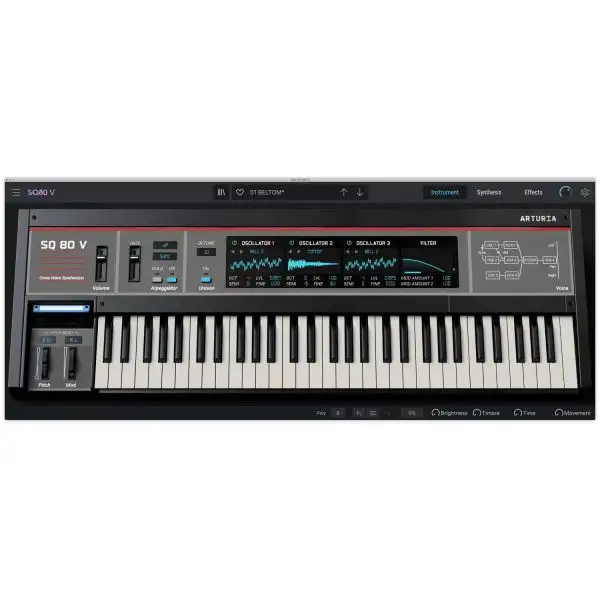
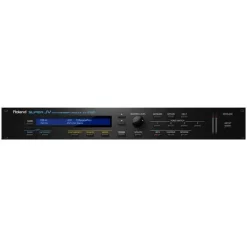
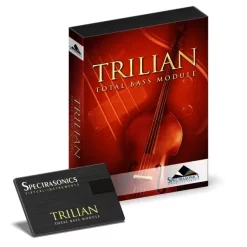
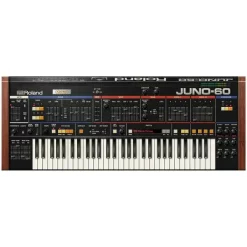

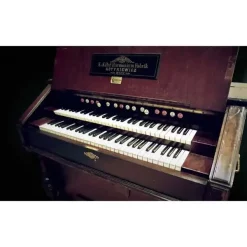


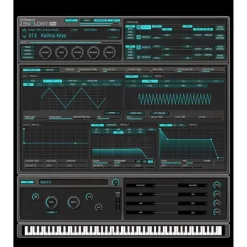
Reviews
There are no reviews yet.